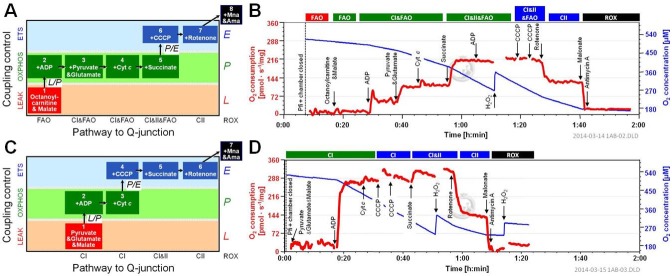Fig 1. Conceptual schematics of substrate-uncoupler-inhibitor titration (SUIT) protocols for ex vivo respirometry in permeabilized muscle fibers.
SUIT1 (Fig 1A) was designed to primarily examine control of OXPHOS capacity. SUIT2 (Fig 1C) was designed to measure respiration with NADH-linked substrates and succinate (S) without fatty acids. Non-phosphorylating respiration in the absence of adenylates is indicated by leak respiration (LEAK or L). Coupled respiration with ADP is represented by oxidative phosphorylation (OXPHOS or P). Uncoupling titrations with CCCP yield assessment of electron transfer system capacity (ETS or E). Substrate additions of octanoylcarnitine (Oct) and malate (M) are indicative of fatty acid oxidation (FAO). Additions of substrates pyruvate (P) and glutamate (G) are indicative of respiration with additive electron supply by NADH to CI in the presence of fatty acid substrates (SUIT1) or the absence of fatty acid substrates (SUIT2). Subsequent addition of S is indicative of convergent electron supply to the Q-junction through CII. Succinate-linked respiration is indicated by inhibition of CI by rotenone (Rot). Finally, residual oxygen consumption (ROX) is determined after inhibition of CIII with malonate (Mna) and antimycin A (Ama). Representative edited examples of each protocol in Raced dogs are shown in Fig 1B and 1D, respectively.

